By Rick VanSickle
There’s a youth movement taking shape at Stratus Vineyards, with stylish new wines joining an already well-established portfolio that leans heavily of the art of assemblage — and always will.

With 34-year-old winemaker Dean Stoyka (left above with Reeves), who took the reins from veteran winemaker J-L Groux in January of 2022, the venerable Niagara-on-the-Lake winery recently hired Liam Reeves, 27, for the role of vineyard manager. “I remember always being the youngest and now I’ve transitioned to the oldest, when J-L isn’t in the building, of course,” Stoyka says with a laugh.
That youthful exuberance was on full display last week for the official launch of the “ultimate assemblage” at Stratus, a wholly unique and new wine simply called Alto Red, held at the Wellington Court Restaurant in downtown St. Catharines (check out those amazing sliders, in the photo below!). It was such a pleasure to see both Stoyka and Reeves holding court with estate director Suzanne Janke to a room crowded with young, passionate bottle shop owners, restaurateurs and sommeliers fawning over the latest creation and eager to get it on their lists and shelves.
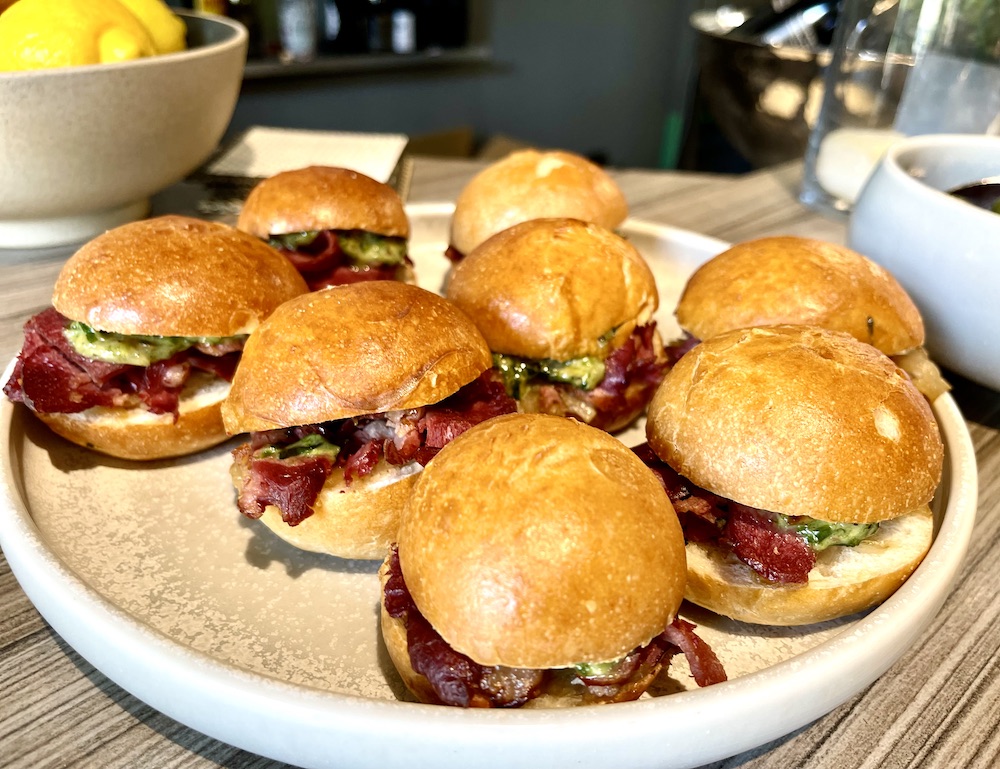
Reeves learned from Stoyka as a former student at Niagara College, so it does seem like the perfect fit for Stratus, which continues to re-invent the wheel on the wine side while zealously adhering to the No. 1 principal at the winery: everything flows from the Stratus Red and the Stratus White assemblage wines vintage to vintage.
The Alto Red (it can be purchased locally at both Archive Wines and Spirits and BarBea or on wine lists at participating restaurants) is a wine created for licensees and bottle shops only. It’s a fun wine made with serious intent from both red and white grapes and designed in the same way that the Stratus Red and White wines are made — through endless tasting trials and blending sessions.

The wine is a delight, reminiscent of the traditional Burgundian blend of Pinot Noir and Gamay called Passe-tout-grains (PTG), that is best served a touch chilled and ready to go right from the bottle. I can envision this wine — made from five estate red varieties and three white varieties — as a food-friendly, by-the-glass, go-to wine at restaurants throughout Ontario for consumers who don’t want to be hit over the head with an over-oaked and tannic laden wine. It’s a bridge wine for new wine lovers to the more complex and age-worthy estate offerings.
The wine completes the assemblage dogma with now three wines expressing white and red blends, and with the Alto, a combo of the two, in the portfolio.

The name Alto (a noun meaning mid-level, layer clouds or the second highest voice in a four-part chorus) fits perfectly with the Stratus vibe. The fetching label features the meteorological symbol for the altostratus cloud (as featured on the shirt of every Stratus employee at the launch). “This mid-level, layer cloud allows one to see further into the distance,” the promotional material says. “We interpret this as an analogy for a brighter and airier red with a clear view to the future.”
Mixing red and white grapes is not new, at least in Old World wine regions. Think Viognier and Syrah in Cote-Rotie, and Clairette, Grenache Blanche and Piquepoul in Chateauneuf-du-Pape. We are starting to see this pleasant combination more often now in New World wine regions with satisfactory results.
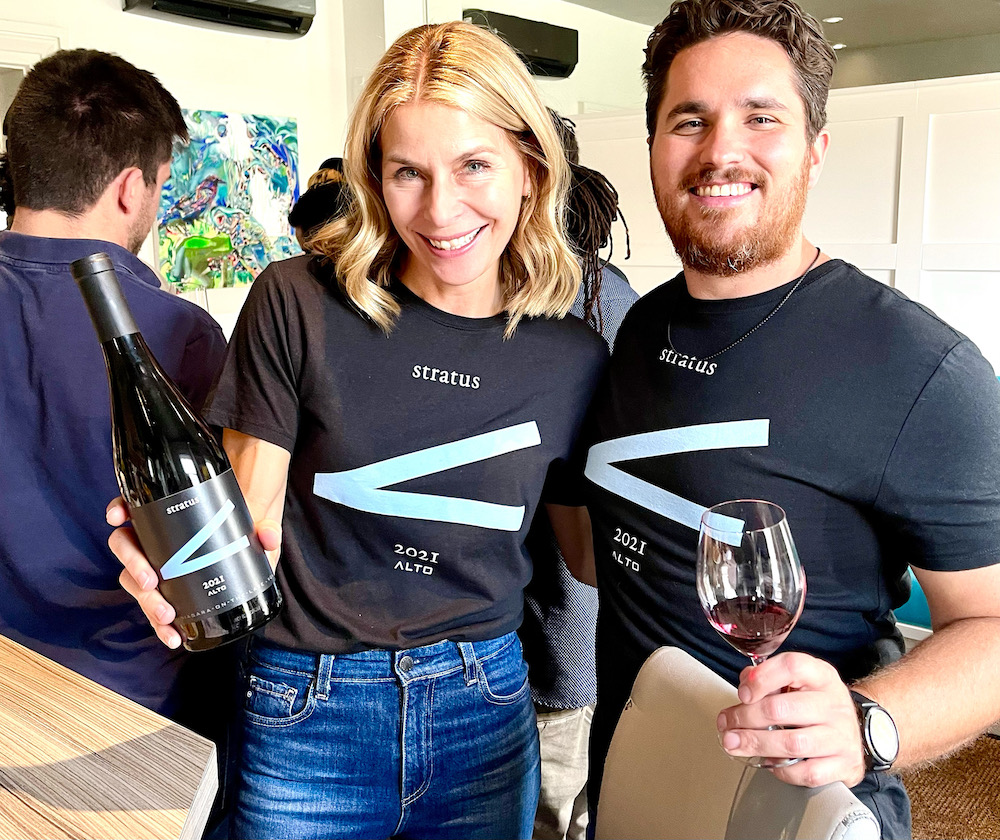
A couple of other spring wines from Stratus previewed also bridge the gap between serious Stratus devotees and those younger wine drinkers poking around the edges of more classically built wines. The Field Blend Ancestral 2022 and the Stratus Skin-fermented White 2022 are made in the same vein (but not as over-the-top as some in the market) as what many think of as “natural wine.”
It was an impressive tasting that also featured the Stratus Chardonnay 2021, Stratus Cabernet Franc Rosé 2022, and the flagship Stratus Red 2019.
Here’s what I liked from the tasting.
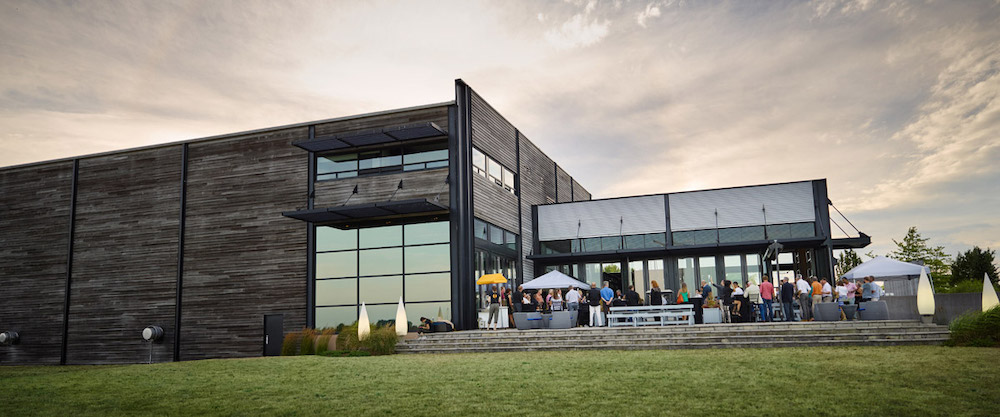
A note about the winery: Stratus is a gravity flow winery, one of the few pump-free wineries in the world where wine is transported in tanks and barrels or moved through gravity flow, but it is never pumped. The winery is a LEED-certified facility attesting to its commitment to sustainability from farm to bottle.
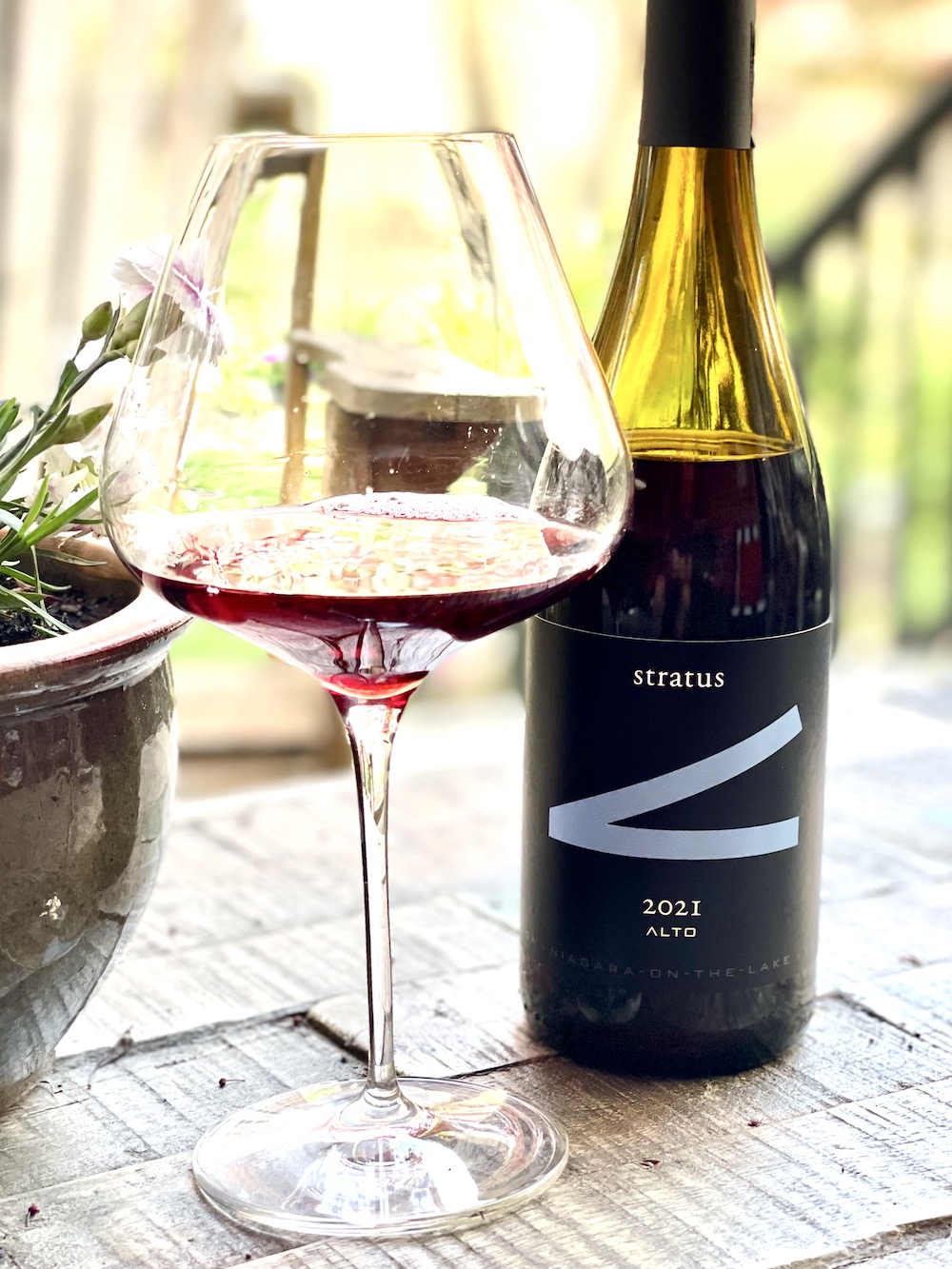
Stratus Alto 2021 ($29, licensee and bottle shops only, 92 points) — The grapes in this unique blend consist of Cabernet Franc (37%), Cabernet Sauvignon (24%), Merlot (10%), with just a little Sauvignon Blanc, Viognier, Semillon, Syrah, and Sangiovese for good measure. It has an inviting nose of violets, fresh-picked cherries, wild blueberries, subtle earthy/mineral notes and just a dash of pepper and spice. It’s smooth and plush on the palate with light tannins, nicely integrated red and dark fruits, anise, pleasant earthiness, and vibrancy through a lifted finish. You can drink it now or hold a couple of years if you must.
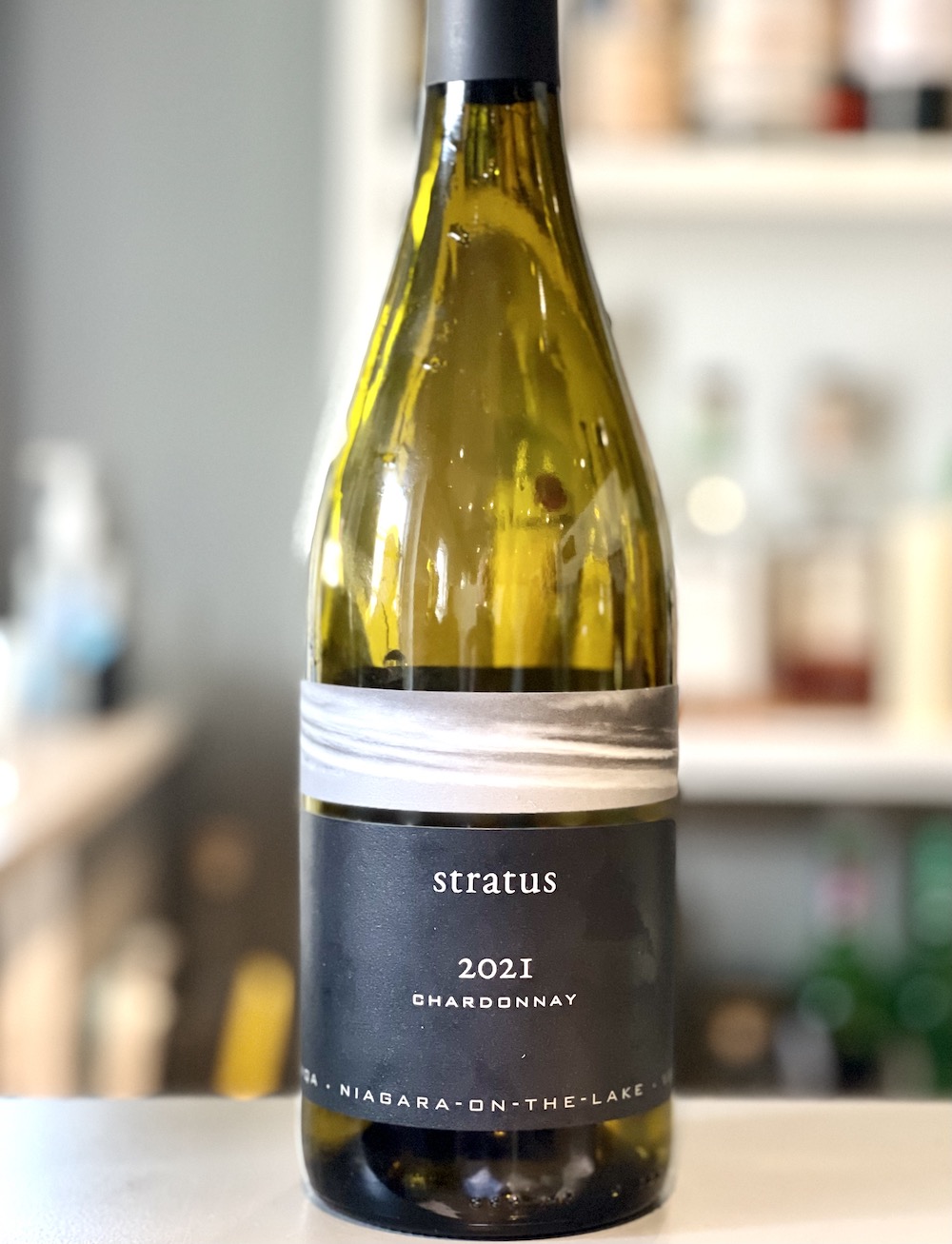
Stratus Chardonnay 2021 ($35, Vintages in June, 91 points) — This is the baby sister Chardonnay to the signature “bottled on the lees” version. It’s barrel fermented and aged in neutral oak for 10 months. The wine is highly aromatic with ripe white peach, yellow apple, lemon curd and a touch of tropical fruits. It’s ripe, round, and juicy on the palate and shows stone fruits, lemon tart, and a touch of citrus zest on a freshening finish.
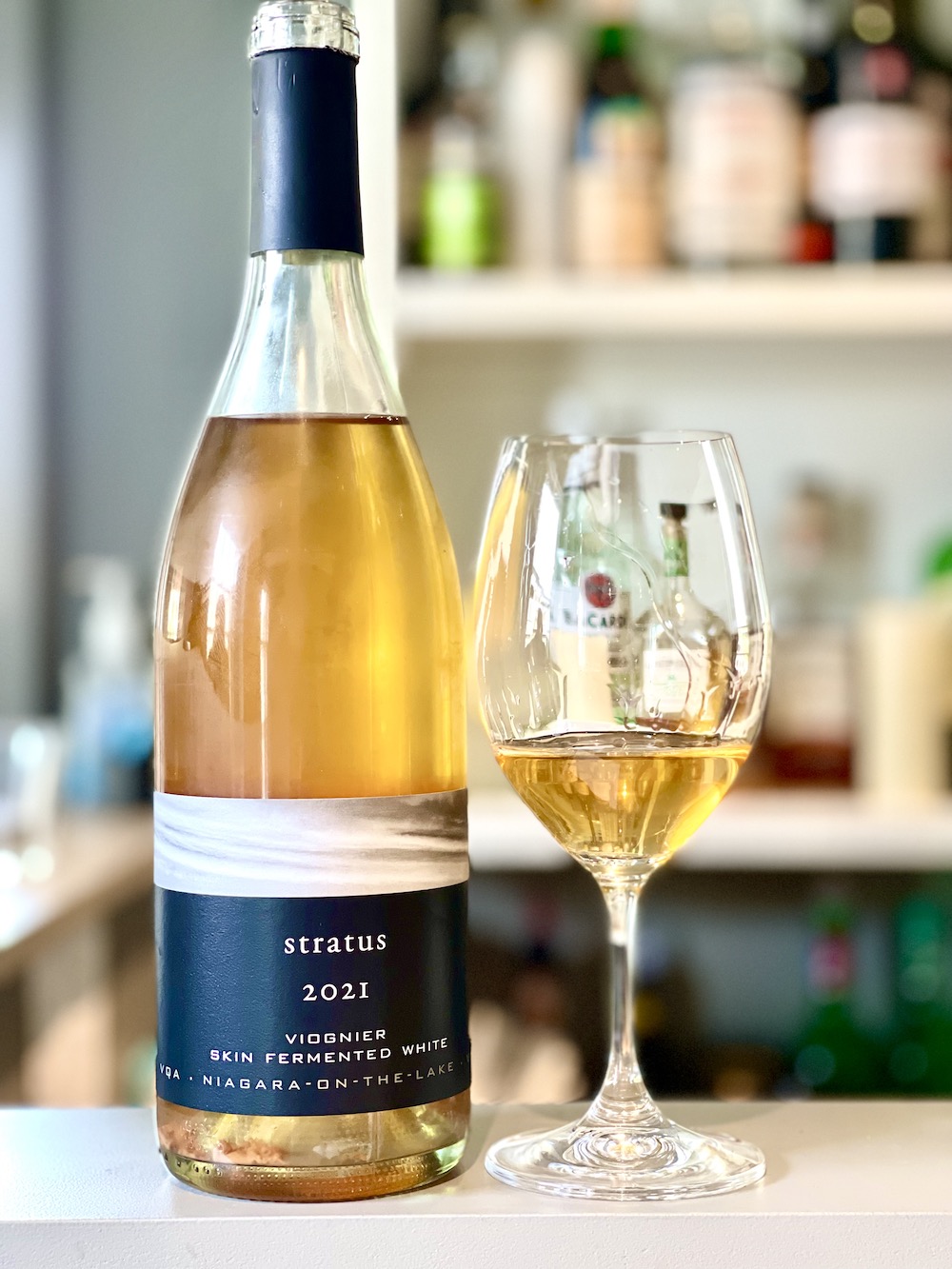
Stratus Viognier Skin-Fermented White 2022 ($32, winery, 90 points) — This is an “orange wine, but not to the extreme,” explains Stoyka. It’s unfiltered and unfined and spends a minimum of 10 days on the skins, but in the modest range for orange wines. “It’s a gateway to orange,” Stoyka adds, a bridge for dedicated fans of Stratus to dabble in the natural wine playground and pique their interest, without scaring them away. It has a fairly clean nose of orange peel, Asian pear, dried flowers and apricot with a golden/blush hue in the glass. It’s tame, fresh, and pleasant on the palate with ever so subtle tannins, orange peel/zest, citrus, apricot, and pear fruits with a hint of bitterness on the bright and juicy finish. There is subtle cloudiness in the bottle with natural sediment that gathers at the bottom of the bottle, so, when chilling, stand the bottle up in the fridge before pouring.
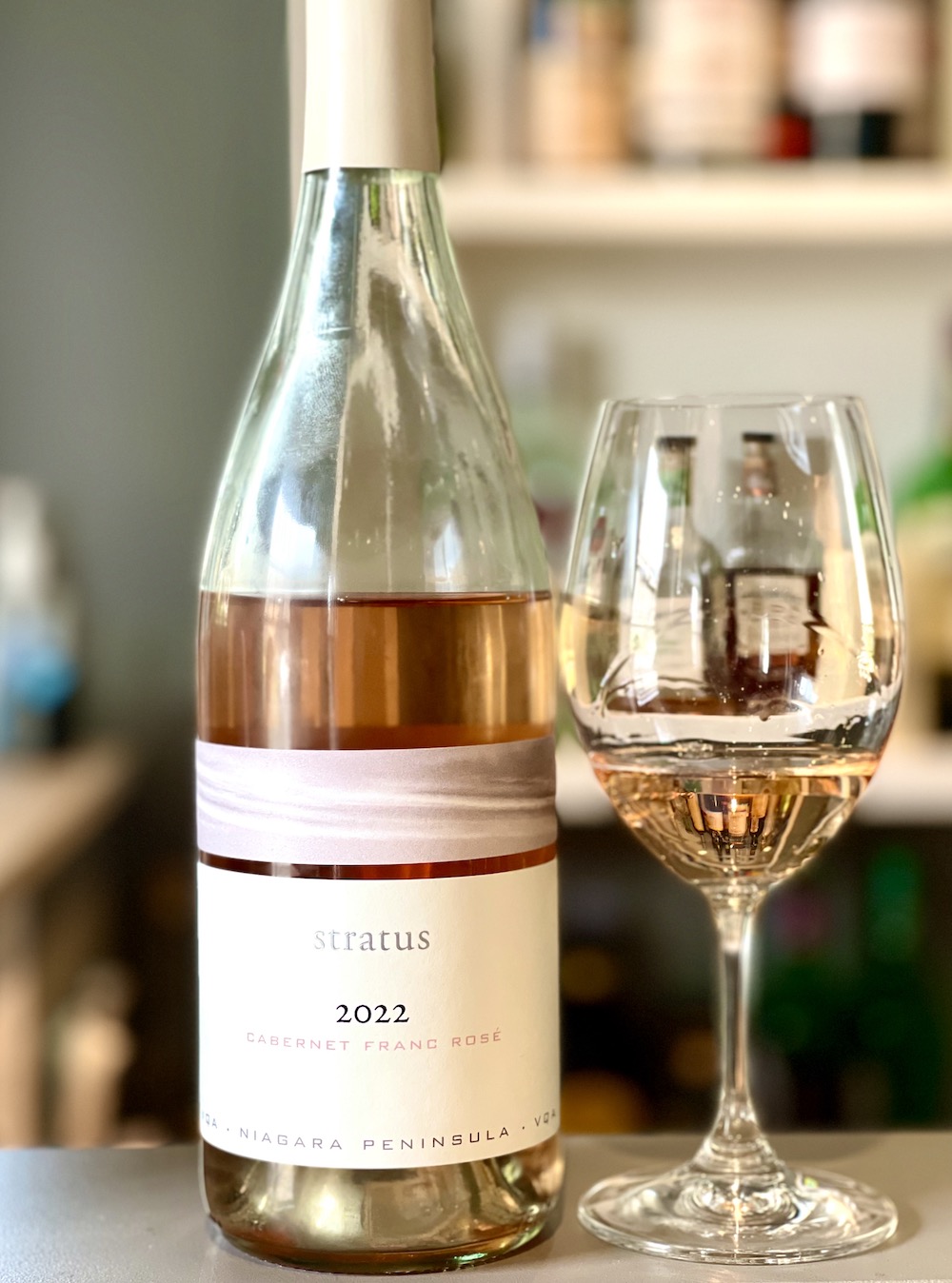
Stratus Cabernet Franc Rosé 2022 ($32, winery, 91 points) — Pretty aromas of wild raspberries, fresh-picked strawberries, citrus zest, wild herbs, and mineral notes. There’s delicacy on the palate and lovely saline minerality to go with fresh red berries, a squeeze of lemon, herbs and a bright, lifted finish. An elegantly styled rosé to serve with soft cheeses or grilled shrimp.
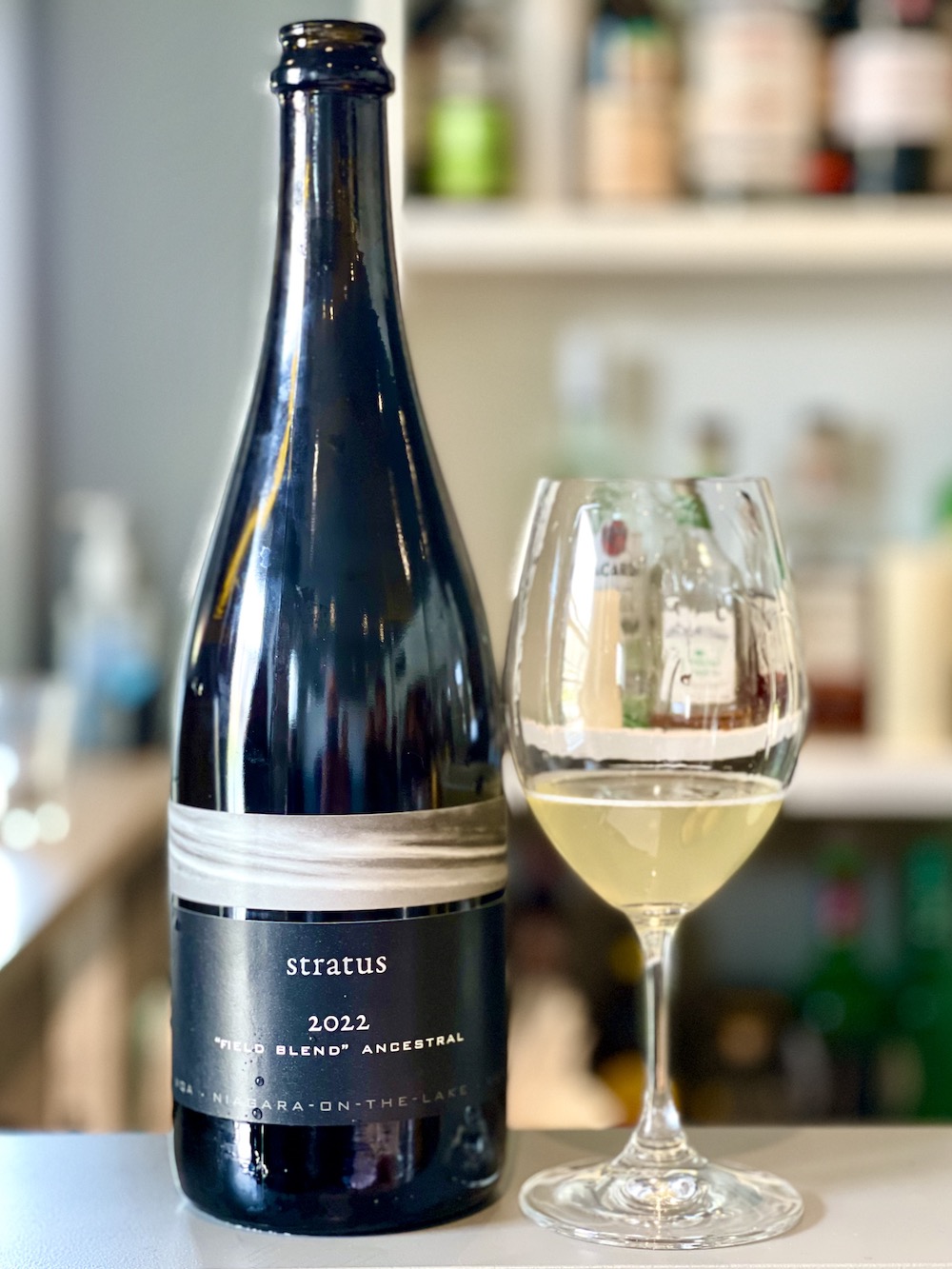
Stratus Field Blend Ancestral 2022, July 1 release, $35, July 1 release, 92 points) — This is a wine that was envisioned by Stoyka after a trip with other winemakers to Italy, where field blends are part of the winemaking tradition. Stoyka wanted to gather up a variety of grapes from the estate, pick them all at once, press them and vinify using the oldest sparkling method in the world, predating the methode traditionelle, a naturally paused fermentation that restarts in spring to complete the “bubbly” effect in the bottle. This is finished in a crown cap and left undisgorged while the lees remain in bottle and contribute texture and an intriguing hazy hue. The three grapes — Riesling, Chardonnay, and Sauvignon Blanc — need to be separated before joining together because VQA does not allow unidentified “field blends,” and therefore each variety needs to be weighed and the information sent to the authority for approval. So, a lot of work for such a fun and simple, lightly effervescent bubbly wine. There is nothing funky about this, it’s fresh, bright, enticing and intriguing with a lovely nose of bright lemon, white peach, nectarine, kiwi, and passionfruit. It’s absolutely delicious on the palate, so bright and cheery with a soft, tickling bubble and firm vein of acidity on the finessed finish tying all those flavours above into a neat little bow. At 11% abv, flip the cap and pour in whatever glass you have handy and enjoy!
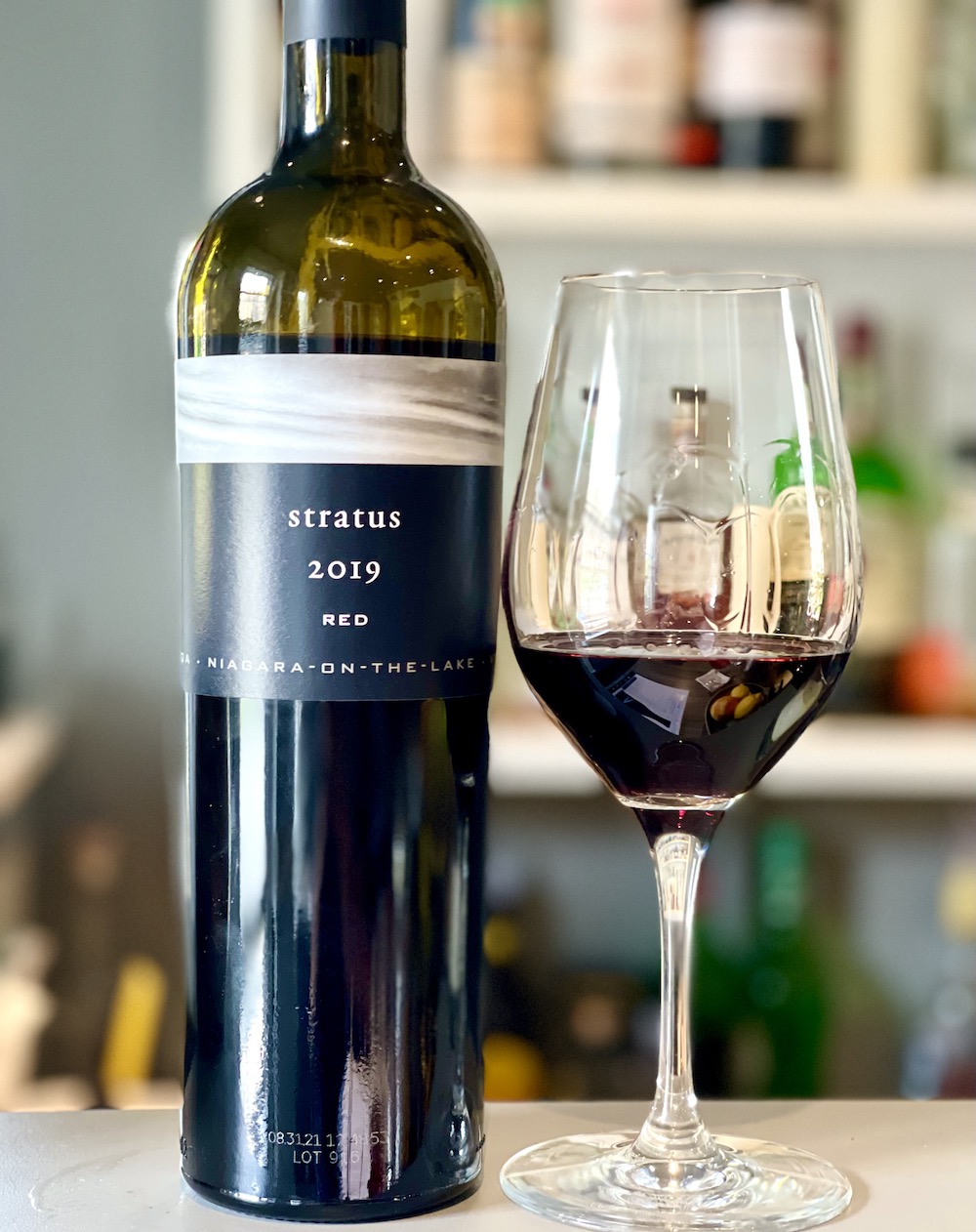
Stratus Red 2019 ($49, 92 points) — For as long as I have been publishing this website, the top assemblage red wine has been smartly priced between $44-$49. That represents great value for a red that always performs in the top echelons of Ontario’s greatest red wines. The 2019 Stratus Red consists of (are you ready?): Cabernet Franc, Merlot, Cabernet Sauvignon, Petit Verdot, Tannat, Syrah and Malbec. The proportions are meticulously derived at with intense barrel tasting and blending trials held over months and months with the Stratus team until they feel this wine represents the best of the best achieved at Stratus in each vintage. The final blend spends 671 days in oak (6% new barrels). There is a beautiful floral/perfumed note on the nose of this master blend with brambly black raspberries, earthy/savoury notes, black currants, wild herbs, damson plums, tobacco leaf, black cherries, and fine oak spice accents. It’s plush and smooth on the palate with medium+ fine tannins, a chorus of cassis, black currants, and ripe red berries, with lovely earthiness and dried tobacco followed by integrated spice and a long, finessed finish. Can cellar 10+ years.


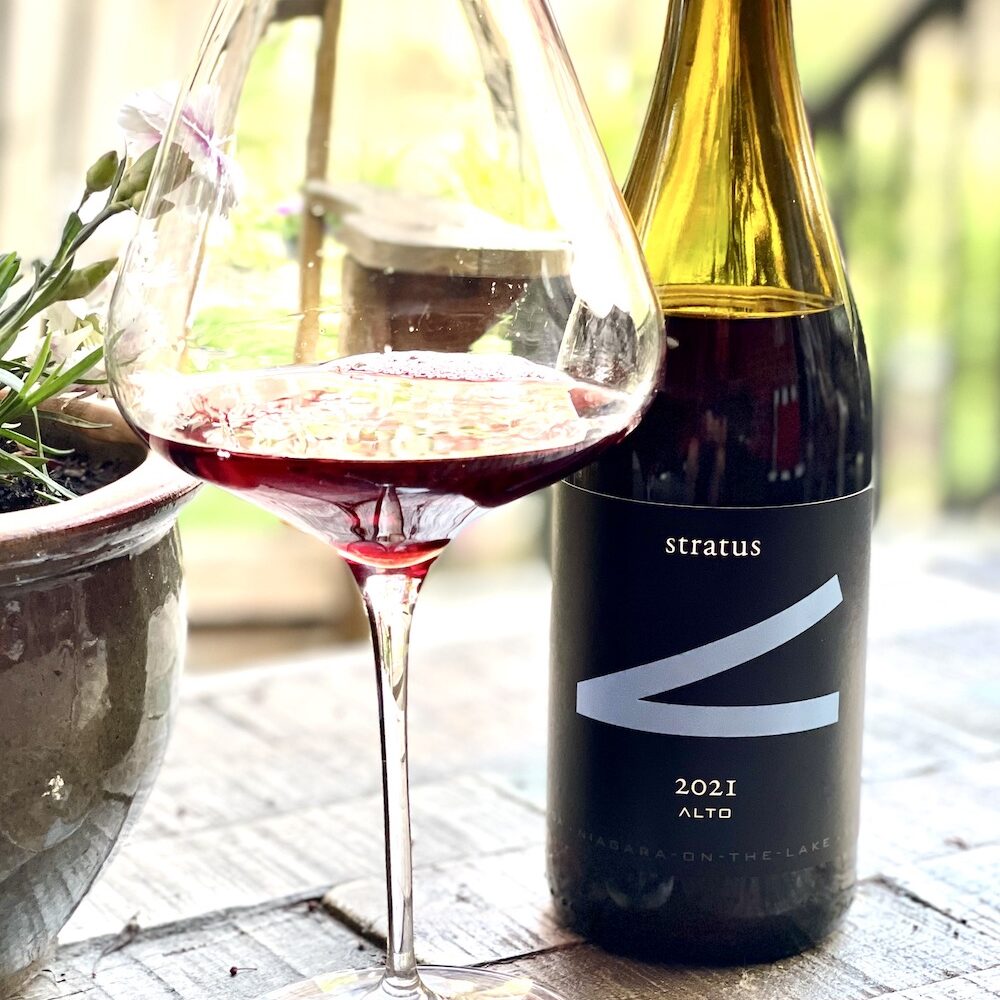



Comment here